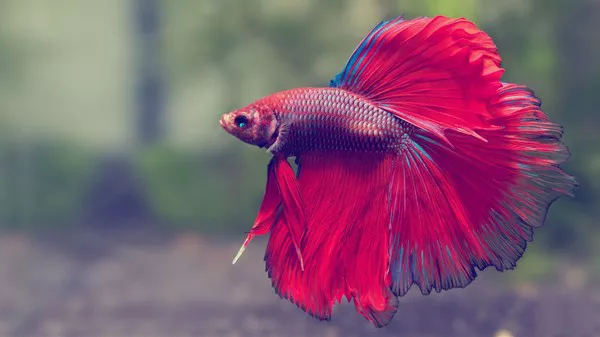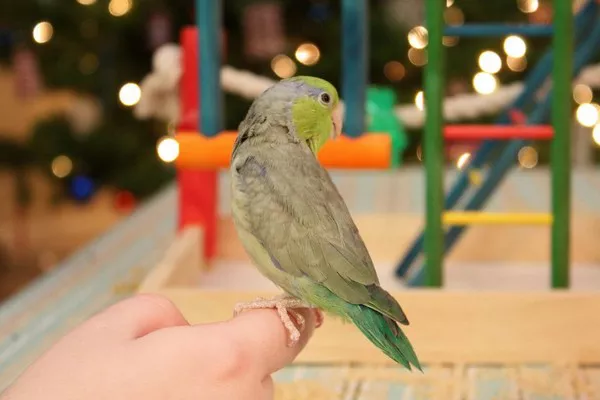In the vibrant and diverse world of aquarium keeping, one popular question that arises is whether red cherry shrimp and bettas can live together peacefully. Bettas, also known as Siamese fighting fish, are renowned for their vivid colors and territorial nature. On the other hand, red cherry shrimp are small, hardy crustaceans that add a splash of color and natural algae control to any tank. This article delves into the complexities of housing these two species together, exploring their behavioral traits, environmental needs, and the dynamics of their interaction. By understanding their unique requirements and potential conflicts, aquarists can make informed decisions about creating a harmonious aquatic environment.
Understanding the Red Cherry Shrimp
Biological and Behavioral Traits
Red cherry shrimp (Neocaridina davidi) are small, freshwater crustaceans that are popular in home aquariums due to their vibrant red coloration and algae-eating abilities. They grow to about 1-1.5 inches in length and are known for their resilience and adaptability in various water conditions.
Size and Behavior: These shrimp are relatively small and non-aggressive. They spend most of their time scavenging the substrate for food and algae, making them low-maintenance and ideal for aquarium environments.
Social Structure: Red cherry shrimp are generally peaceful creatures that can live in groups. They exhibit minimal territorial behavior, which is advantageous when considering tank mates.
Habitat Requirements
Red cherry shrimp thrive in well-maintained aquariums with specific water conditions:
Water Parameters: They prefer a temperature range of 68-78°F (20-26°C), a pH of 6.5-8.0, and soft to moderately hard water. They are sensitive to sudden changes in water conditions, so stable parameters are crucial.
Tank Setup: A well-planted tank with hiding spots, such as rocks and driftwood, is ideal for these shrimp. They require a filter for water quality but should not be exposed to strong currents.
Understanding Betta Fish
Biological and Behavioral Traits
Betta fish (Betta splendens), commonly known as Siamese fighting fish, are renowned for their striking appearance and aggressive nature. They are native to Southeast Asia and are often kept in single-species tanks due to their territorial instincts.
Size and Behavior: Adult bettas can reach up to 3 inches in length. Males are particularly known for their aggressive behavior towards other males and sometimes towards other fish.
Social Structure: Bettas are generally solitary creatures. Male bettas are highly territorial and can be aggressive towards other fish, making tank compatibility a significant concern.
Habitat Requirements
Bettas also have specific habitat needs:
Water Parameters: Bettas prefer a temperature range of 75-80°F (24-27°C) and a pH of 6.5-7.5. They are adaptable to different water conditions but require stable parameters.
Tank Setup: Bettas thrive in tanks with plenty of hiding spots and gentle filtration. They can tolerate smaller tanks but benefit from larger spaces with appropriate cover to reduce stress.
Potential Conflicts Between Red Cherry Shrimp and Bettas
Behavioral Issues
The primary concern in housing red cherry shrimp with bettas is the betta’s aggressive nature:
Aggression: Male bettas are known for their aggression and may see shrimp as potential threats or prey. Their aggressive behavior could lead to attacks on the shrimp, causing stress or harm.
Territoriality: Bettas are territorial and may react aggressively to the presence of other species in their tank, including shrimp.
Physical Threats
The physical size and abilities of bettas pose potential risks to shrimp:
Predatory Instincts: While red cherry shrimp are small and not typical prey for bettas, bettas might attempt to attack or eat them if they perceive them as a food source.
See Also: Can Blue Shrimp Live with Betta Fish?
Tank Conditions: Bettas may disturb the tank environment through their activity, potentially affecting the shrimp’s well-being.
Mitigating Risks: Strategies for Coexistence
Choosing the Right Tank Size and Setup
Creating a suitable environment for both species can help reduce potential conflicts:
Tank Size: Opt for a larger tank to provide ample space for both the betta and the shrimp. A tank of at least 10 gallons is recommended to minimize territorial disputes and provide plenty of hiding spots.
Hiding Spots: Incorporate plenty of hiding places for the shrimp, such as dense plantings, driftwood, and rocks. These provide refuge and help reduce the likelihood of confrontations.
Maintaining Water Quality
Stable water quality is crucial for both species:
Regular Monitoring: Ensure that the water parameters are suitable for both the betta and the shrimp. Regularly check the temperature, pH, and water hardness to keep conditions stable.
Filtration: Use a gentle filter to maintain water quality without creating strong currents that could stress the shrimp or disturb the betta’s territory.
Behavioral Monitoring
Observing the interactions between the betta and the shrimp is essential:
Initial Introduction: When introducing shrimp to a tank with a betta, monitor their interactions closely. If the betta displays aggressive behavior, it may be necessary to separate them.
Stress Signs: Watch for signs of stress in the shrimp, such as hiding excessively or unusual behavior. If the shrimp appear to be suffering, re-evaluate the tank setup or consider separate housing.
Alternative Tank Mates for Bettas and Shrimp
If cohabitation proves challenging, consider alternative tank mates that may be more compatible:
Alternative Tank Mates for Bettas
Snails: Snails, such as mystery or nerite snails, can be excellent tank mates for bettas. They are generally hardy and less likely to provoke aggression from the betta.
Peaceful Fish: Small, peaceful fish like neon tetras or Corydoras catfish can sometimes coexist with bettas if introduced carefully and monitored for compatibility.
Alternative Tank Mates for Red Cherry Shrimp
Peaceful Fish: Fish like guppies or small rasboras are often suitable tank mates for shrimp. They are generally peaceful and less likely to prey on shrimp.
Other Shrimp Species: If a mixed-species tank is desired, consider other shrimp species that are similarly small and non-aggressive, such as crystal red shrimp or bee shrimp.
Conclusion
The question of whether red cherry shrimp and bettas can live together is complex and depends on various factors, including tank size, setup, and individual fish behavior. While it is possible for these species to coexist, careful planning and observation are necessary to ensure a harmonious environment. By understanding the needs and potential conflicts of each species, aquarium enthusiasts can create a thriving tank that benefits both the bettas and the red cherry shrimp.
Ultimately, successful cohabitation requires a well-maintained tank, vigilant monitoring, and a willingness to adapt the environment as needed. Whether choosing to house these species together or opting for alternative tank mates, the key to a thriving aquarium lies in balancing the needs of all its inhabitants.
Related Topics:






















